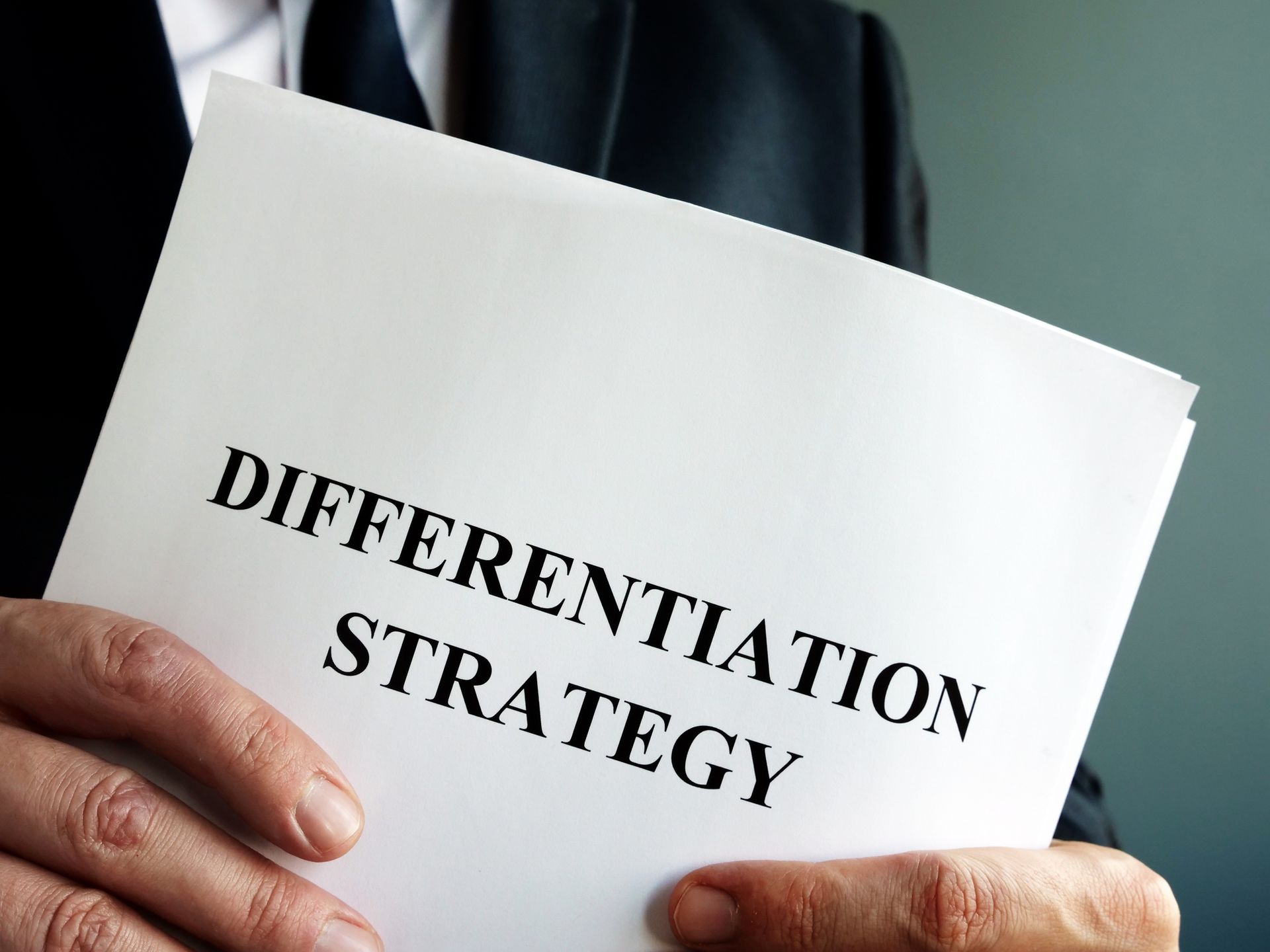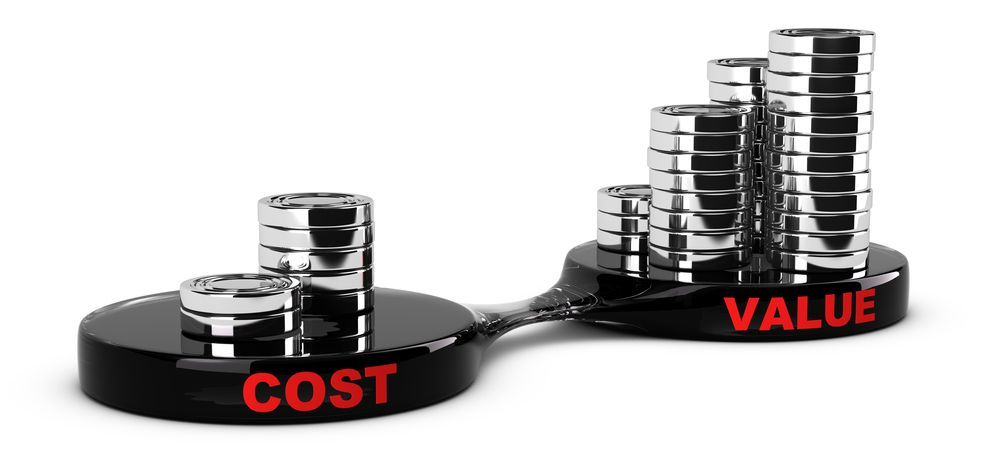Transport, Freight & Logistics
The depth of understanding of the client’s world – that is required to unearth all possible avenues for differentiation – is probably at its most intense in the ultra-commoditised transport, freight and logistics sector.
It’s not good enough to offer loose, unsubstantiated reassurances about service levels. Your opportunity to stand out lies in developing a knowledge of the client that is materially superior to that of your competitors.
ACADEMY KNOWLEDGE BASE

By Jordan Kelly
•
April 16, 2025
If you’re a senior executive responsible for setting – and overseeing the attainment of – your enterprise’s corporate growth goals, I have a question for you: How informed are you on the individual contracts that comprise the overall total of your organisation’s business-under-pursuit? How certain are you that the priorities underpinning the prioritisation of current […]

By Jordan Kelly
•
March 2, 2025
Prominent social commentator of the Victorian era, John Ruskin, famously observed: "There is hardly anything in the world that some man cannot make a little worse and sell a little cheaper, and the people who consider price only are this man’s lawful prey." Ruskin’s words are nowhere more applicable than in the world of high-value tenders. With rarely an exception, those organisations that issue market calls with the sole or primary objective of sparking price competition (and getting a cut-throat deal), inevitably pay the price in some other form. That’s not news. But it doesn’t apply to all potential customer organisations . . . and the ones to which it doesn’t apply are, obviously, the ones smart transport operators want to be targeting. The trick is to give those organisations a solid reason – other than cost – to choose you . Differentiating in A Highly Commoditised Space You know what’s coming, right? You guessed it: The predictable admonition to differentiate your company and your offering on something other than price. That’s all well and good, but let’s take, for example, my readers from the transport sector (and other highly commoditised industries): When the competition offers exactly what you do and you’ve done everything you can – exactly how do you differentiate? The answer: You think from the client’s head. The point of self-focus from which the vast majority of bidders come when responding to an Expression of Interest (EOI), Request for Tender (RFT) or Proposal (RFP) renders it hard to see what’s most meaningful to the client. Sure, what the client wants is articulated in the selection criteria . . . but, in some industries particularly, these criteria can be pretty bald and (often, if the client documentation is template-based) not nearly as contract-specific as they could be. So . . . you have to dig deeper . Way below surface level. A Courageous Pursuit Recently I conducted a series of bid strategy sessions for a rapidly growing mid-tier organisation in a somewhat courageous pursuit for a certain type of contract with a very large mining consortium. After leading the senior management and the appointed bid team through a comprehensive and in-depth analysis of the competitive landscape, the surprised and humbled team made the collective observation that, “We’re not anything special after all. We don’t do anything more or anything different than anyone else.” I assured them they did. They had done something very different indeed by conducting a series of detailed, in-depth analyses of their prospective client’s world, of its priorities, and of their own capabilities in the context of their new-found knowledge. There’s A Tangible Value to A Client-Focused Bid That made them immeasurably different. Unlike their competition which would undoubtedly present the same old template-style, supplier-centric dross as everyone else, they would – through a now- deep understanding of their client – produce a bid that clearly demonstrated a superior knowledge of that organisation’s operating environment and challenges. Critically, my client would demonstrate that it had formulated its service proposal in direct (and comforting) accordance with these. A response of that quality offers a distinct and very real value to the procuring organisation . . . a value in terms of risk minimisation, frustration avoidance, value maximisation , and general peace of mind . And all of these, in turn, ultimately have a monetary value – especially in a long-term service provision contract.

By Jordan Kelly
•
February 4, 2025
In an article I wrote for Asia Pacific Air Cargo , I suggested air freight companies "de-commoditise" their service — or offering — to prospective clients. The article included a real-life example of the glaring opportunities (and the rewards) for companies willing to think, and act, outside the square when it comes to researching and proposing solutions to clients’ needs. But how do you ”de-commoditise” your bids and sales proposals ? The simple answer to that question is . . . by not producing a “commodity” proposal in the first place. What then is a ‘commodity proposal’? A commodity proposal is what the vast majority of companies in commoditised industries are producing . . . even though many think they’re not doing anything of the sort. Actually, they are . . . according both to my observations and also to the comments of many experienced tender evaluators I have spoken to. In short, a commoditised bid is an Expression of Interest (EOI), Request for Proposal (RFP) response or any other form of submission that is: • Self -centric instead of client -centric. • Feature -focused instead of benefit -focused. • Ineffective in meaningfully differentiating its proposed product or service. • Full of industry / supplier jargon. • Overly liberal in its use of trendy but essentially meaningless terms. • Template-based i.e. the core content could have been produced for any number of end recipients. I’ll focus on the first three points. Self-centric vs Client-centric Invariably, when I evaluate a tender or proposal produced internally by an organisation, the first word in the Executive Summary is “We”. With few exceptions, most of the paragraphs in this all-important opening section also start with “we” and it’s not at all uncommon that most of the sentences within each paragraph in the copy thereafter start with “we” as well. This is a clear indication, firstly, that the tendering company doesn’t know enough about the organisation it’s proposing to; secondly, that it brings a largely self-focused viewpoint to the table; and thirdly, that the tenderer is probably pushing a pre-formulated, off-the-shelf “solution”, with greater priority placed on its own convenience or profitability than the client’s. Answering an EOI or RFP — or putting a proactive proposal to a client organisation — is a lot like dating. Even the best-looking proposal can become boorish if it constantly puts its own needs first and shows little genuine interest in the other party. It simply doesn’t augur well for a successful long-term relationship. If, on the other hand, a company has done its homework and is genuinely concerned to seek out and satisfy the precise needs of the client organisation, its proposal language will be entirely different. It will be focused on its understanding of the client’s problems, priorities and environment, and it will paint a clear picture of how it intends to bring about a superior solution to these issues. But beware! This does not mean you simply change the word “we” to “you”. And it does not mean you resort to “consultant speak”, with its annoyingly we-already-know-everything-about-you undertones. No! It means you genuinely research your prospective client organisation’s issues as they concern your own industry, you determine how you will bring a genuine solution and the best overall value to your prospect, and then you communicate it from their perspective. Feature-Focused vs Benefit-Focused Anyone with a sales background will no doubt be thinking: “Sure. Don’t talk about ‘features’, talk about ‘benefits’. That’s basic. That’s Sales 101.” But it’s easier said than done when you’re constantly looking out at the landscape from your own viewpoint, from within the organisation that produces the product or provides the service you’re selling. Too often, sales personnel producing proposals rely heavily on “cut-and-pastes” from glossy, company or “brand” focused promotional literature. These often promote features. At best, any benefits they do describe are highly generic. Clients aren’t interested in features, unless they know as much about your industry as you do and can make the translation for themselves. And stating generic benefits quite often results in missing the mark, too. What impresses clients are features that demonstrate clearly how they are provide the solution to that client’s specific problem or achieve their specific objective . . . and that provide proof points, case examples, and some form of valuable quantification or measurement. The key is to identify and articulate precisely how what you’re proposing is going to solve their problem in a manner superior to that of your competitors’ offerings . Of course, this means you have to know what your competitors are up to at all times — and not just their pricing structures. You have to undertake the same “matchmaking” exercise between your competitors’ likely solutions and the prospect’s needs. Only then can you be even reasonably certain that your point of difference is what you think it is, and that it is a winner with the prospect.

By Jordan Kelly
•
February 4, 2025
Of all industries, the freight and transport sector is arguably one of those most at risk of its services being viewed and treated as commodities. It’s a depressing reality for the industry, but there is an answer. If a company struggles to differentiate its product or service from that of its competition, the first element of any corrective strategy should be to seek to understand its prospects and its clients at a deeply detailed level. Not all companies do this well. Most don’t – regardless of any conviction to the contrary. Why am I confident to make such a sweeping statement? I see the evidence on a daily basis as a bid strategist and writer, and as an evaluator and bid coach. When I take on a new client, almost without exception, that organisation’s written proposal materials speak for themselves in this regard: Most companies take a heavily self-centric perspective in responding to tender calls, or in producing any other form of bid or proposal. And those that think they don’t, are always surprised to learn just how much further they could go in taking (what they thought was) a client-centric approach . . . and, in the process, de-commoditising themselves far more effectively. Symptoms of Self-Centricity In this post, I’m going to focus on how a self-centric perspective shows up in a bidder’s documentation. In order to give very specific and “graspable” examples, I’m going to focus on just one part of a bid document: the Executive Summary . This front-piece of a bid, tender or proposal is where the bidder’s client-centric – or, alternatively, its self-centric – approach shows up loud and clear. In the following commentary, I provide just two examples that literally whack a tender evaluator between the eyes with a bidder’s self -centricity. I’m going to highlight the underlying problem , and let you, yourself, go deep-diving for the many Pursuits Academy posts that provide solutions. Understanding the problem before looking for the solution, however, is critical. Without an understanding of what “wrong” looks like and why it’s wrong, “right” isn’t so easily identifiable nor the logic behind it so obvious. Example 1: ‘We, Our, Us’ I once evaluated a bid, the Executive Summary of which featured the seller’s name no less than 17 times in a short series of introductory paragraphs. You might laugh at that, but a large percentage of Executive Summaries end up with the seller’s or service provider’s name (or “We”, “Our” and “Us”) at the beginning of most paragraphs. This indicates a lack of knowledge, understanding and caring about the client organisation and its issues and priorities, as well as a lack of listening skills and a probable low “care factor” on the part of the bidder. The propensity for a bidder to communicate in such a way that the world revolves around them i.e. the supplier or service provider, rather than around the prospect / client makes it obvious to the client and its evaluators that the entire working relationship is likely to evolve in this same, very predictable, direction. This – in the client’s mind – places that bidder in the same self-focused category as the majority of its competition. And this, in turn, relegates it to a largely undifferentiated status. Example 2: Not Framing Strengths in A Meaningful Manner Most Executive Summaries focus almost exclusively on getting across the bidder’s strengths, and perhaps the uniqueness of its offering within the competitive space in question. Few, however, investigate and explain the specific relevance of these to the client, and within the current environment in which that client organisation is operating. Some Executive Summaries do start out in reference to the client, but only as a prelude to a monologue about the bidder’s own capabilities and credentials . . . still not taking the time to fully draw out the client- or contract-specific relevance of these. This comes across as arrogant. Not a desirable trait in a working relationship. Worse still, it comes across as cloth-eared arrogance, to any prospect that may have had discussions about its issues with a bidder, and that could reasonably expect to see the key points of those conversations reflected in a proposal. If nothing else, though, it’s a wasted opportunity. Regardless of any information requests made in a client’s tender call documentation, the client’s interest in the service provider centres around the relevance of that information to its own organisation, priorities, issues and potential contract with the bidder. So let’s come back to de-commoditisation. The extent to which your company, as the bidder/service provider, can demonstrate (a) a relevant and competitively superior understanding of the client organisation, and (b) how your strengths and the aspects of your offering uniquely position you to solve the client’s problem and/or achieve that organisation’s desires, is the margin by which you’ll be out in front of your competition. And the extent to which you are out in front of your competition (on elements of your offer other than price) is the extent to which you have successfully differentiated your company and differentiated your service or solution. In turn, the extent to which you’ve differentiated and de-commoditised, is the extent to which you free yourself from the price trap into which most operators in heavily commoditised industries – like freight and transport – otherwise fall.

By Jordan Kelly
•
January 15, 2025
"De-commoditisation" is the practice of creating a meaningful competitive difference or positioning in order to avoid (within reason) the need to compete on price. It represents a critical element of a non-price-driven business (and bid) strategy. And it’s THE answer for the small operator faced with overly-hungry and cost-advantaged competition. There’s a multitude of available strategies for achieving de-commoditisation, but better still is the fact that – whatever that number may be – it increases exponentially when investigated in the context of any specific industry and geography. One simple (and reasonably generic) strategy for de-commoditisation is to move to a new, heightened and more client-centric level of service. This is often the secret of the small company that successfully hangs onto contracts in the face of deep price-cutting by larger competitors. These operators – almost unconsciously – apply a reasonably uncomplicated formula: they understand their clients not only at the higher, “bigger picture” level but also at the “on-the-ground”, operationally-detailed level. They understand, genuinely care about, and act upon what’s important to the client. And they make themselves indispensable by virtue of their resultant, highly personalised – and thus highly valued – service. Let’s take, as an example, arguably one of the most commoditised service industries of all: freight. Applied to our freight sector example: This type of operator is the freight company that will do whatever it takes to make no deliveries before 4pm . . . if that’s the client’s stipulation, and that checks in regularly with the client to ascertain what is and isn’t working about their service. And, staying with the freight company example, if they are told – or discover for themselves – that there’s an issue with breakages, they’ll implement new loading and other forms of procedure to prevent these. Perhaps most importantly of all, this more diligent type of operator takes these measures proactively i.e. before (rather than after) the fact. They do it, not simply because they’ve been instructed to, but because they know and care that that’s what works best for the client. Building rapport with the client organisation and the people, processes and roles they’re interfacing with has become a natural and central part of their modus operandi. And still with the freight and logistics example: It’s the operator who continually hones basic practices like punctuality, diligence in paperwork, and top-notch presentation. It’s the company with management that makes sure everything is done or delivered on time, that documentation is detailed and error-free, that its drivers are properly attired, and they’re driving trucks that look brand new because they’re washed after every trip. It’s the operator whose drivers are friendly, professional and well-presented . . . the operator who will never allow even one instance of denigration of its brand by allowing a blue-singleted driver to load food into the back of a supermarket. It’s these elements of an SME’s performance that ensure it not only holds its own in terms of marketplace credibility, but can differentiate, cumulatively, “by detail”. Because the client notices.

By Jordan Kelly
•
October 1, 2024
Within the public infrastructure space, I’m known for my specialisation in collaborative contract bidding – in which non-price-based "project alliancing" is the premium delivery format. When responding to Requests for Proposal for this type of contract, price – literally – cannot be used to win the deal . . . because price is formulated in collaboration with the client only after award of the project. In that type of bidding environment, you sink or swim based on your ability to develop a bid strategy with no reliance on price – but with total reliance on value delivered . With “value” the focus of every element of the research and strategy formulation effort, the quest becomes firmly focused on exactly what it is that constitutes “value” and “value for money” in the context of the project being bid for, and in the context of the client’s world. How is that relevant to tendering for a logistics or transport contract? The key point of relevance is this – and it’s consistent with the core message of all my columns to date: If you can determine, with precision, what it is that’s most important to the client, above and beyond all else (and sometimes, the answer to that lies buried deep in the collective subconscious of the client organisation) , nine times out of ten, you’ll have the foundation for your strategy. And nine times out of 10, it will be “ non-price-based ”. If you come in with the keenest price, but somehow manage to trash the client’s reputation within its marketplace, of what benefit is your low price? If you cause grief and aggravation through unreliable delivery times or poor materials handling, what is the true cost of your “service” to the client? These are clearly extremely basic and obvious examples of “cost” versus “value”. However, if you drill down into all the ways a low price might be irrelevant in the face of poor performance on any particular contract, you’ll find a vast list of potential pain points that company will want to avoid. And faced with the prospect, its decision-makers will usually readily concede these aren’t worth putting up with for the sake of a low-ball price. On the same hand, a bid team that does its background research, and that also finds a way and takes the time to drill deeply into the psyche of the client, is generally rewarded with the insights into exactly what it is that constitutes “value” to that organisation. And, again, nine times out of 10, the primary point of value will be non-price-based. There are too many bidders out there – in all industries – whose automatic response to a loss is to attribute it to “being beaten on price”. Some years ago, a survey of UK construction company executives was conducted. These executives were asked why they though they lost bids – and why they thought they won them. In almost every instance, these seasoned industry representatives believed their tendering victories were due to the outstanding job they had done when it came to understanding the client and the specific requirements of the project. But these same respondents believed the only reason they ever lost a bid was because they came in too high on price! This flawed logic stems from a reluctance by bidders to admit that maybe they lost to a competitor not on price, but because that competitor had done its homework more thoroughly. It’s a very simple equation: The more thoroughly you’ve gotten to know the client organisation, and its working environment relevant to the contract in question, the more chance you have of lining up your strengths with the (often intangible) requirements of that client and that contract. And it’s there that you’ll find your core value proposition .


